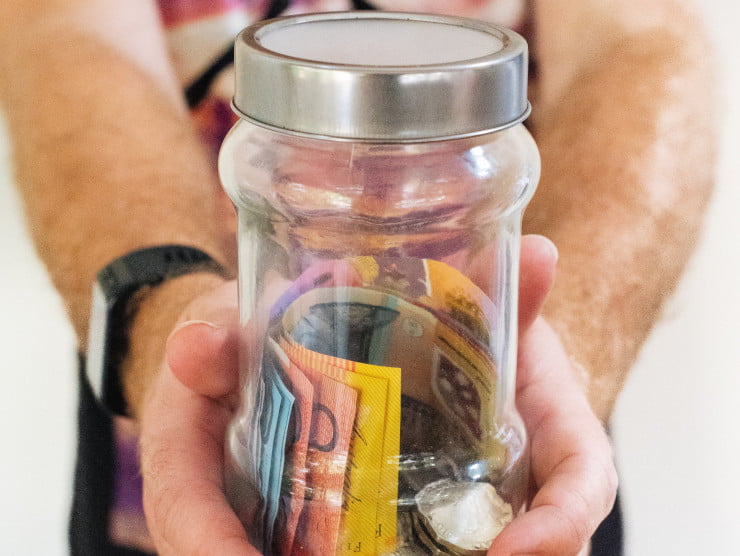How can social media be used for fundraising? Using social media for fundraising can be a great way to raise money for a good cause. The goal of fundraisers using social media networks could be to raise money for a nonprofit organization, funding scientific research, developing life-changing products, or even (especially at this point in 2020) raising funds to keep dearly loved small businesses from having to close during a global pandemic.
Running a social media fundraising campaign has many factors that contribute to the chance of success for the fundraiser. Some of the most common social media fundraising challenges are dependent on having a fundraising campaign that is carefully planned, has realistic goals, with a cause people feel a desire to rally behind, and a team to make it all happen.
That’s why we put together this guide on using social media for fundraising to help walk you through the important steps needed to raise money for your cause on social media.

Determine the Goal and Message of the Social Media Fundraiser
It’s important to have a goal in mind for the fundraiser as well as a compelling message or idea that catches people’s attention on social media networks and tells a story. The goal of the social media fundraiser should be something attainable but it’s also okay to be a bit optimistic about your fundraiser’s goal. Keep in mind your potential reach on social media and make an educated decision on what kind of fundraiser goal is right for your fundraiser.
The message conveyed by your social fundraiser is a critical part of your fundraising campaign because it is what is going to compel people to donate and share the campaign with others. Create a message that tells a story, for example, if you’re a small business trying to raise money for your business to stay afloat during the COVID-19 crisis, perhaps highlighting the story of some of your employees that depend on a job at your small business could be a story you focus on for your fundraising campaign. Or maybe your fundraising story is the history of how your small business was started or the impact your business has on the community. The important thing is that you communicate these stories and convey the urgency and severity of the struggle your business is trying to battle by fundraising on social media.
Create a Social Fundraising Plan
When creating a social media fundraising plan, the most important steps are:
- Deciding on the most relevant social media networks for your fundraiser: Where is your target audience? Your largest social media following? The social network with the highest history of engagement with your brand or your fundraising message?
- Creating a unique, easy to remember fundraising hashtag: What you need is a fundraising hashtag that does a good job of encompassing your message, a hashtag that is catchy, and easy enough for people to remember when they are using it in a post.
- Putting together a social fundraising schedule: Set up a social media fundraising schedule for when you will be creating, publishing, and responding on social media.
- Developing a landing page for the social fundraiser: Add a page to your website dedicated to the fundraiser to use as a way for people to contribute, track progress, and learn more about the fundraiser.
- Using a social media management tool to make fundraising easier: There are many social media management tools that help with content curation, tracking social media metrics for your fundraiser, keeping up with social engagement, and so much more. Find the right social media management tool for your fundraiser’s needs to help take some of the work off of your team’s plate.
Leverage Fundraising Tools, Partners, and Influencers
There are a number of fundraising tools that can be used to aid the process of a social media fundraiser. Consider using well-known fundraising tools such as Indiegogo or GoFundMe, or more niche fundraising platforms like Experiment or Fig. There are even platforms that are more tailored to social media fundraising specifically, for example, Fundly, Qgiv, and Donately. All of these platforms were designed to help with fundraising and can be a lifesaver when it comes to managing a social media fundraising campaign.
Don’t forget about potential partners and influencers for your social fundraiser. There’s a reason why fundraising campaigns like the Ice Bucket Challenge and the All In Challenge became so successful, it’s because it had an incentive to encourage influencers to participate and challenge others. Find a social media influencer, brand, or cause that has a potential invested interest in your fundraiser’s cause and team up to reach more people and increase the success of your social fundraising campaign.
Emphasize Milestones and the Impact of the Fundraiser
Each significant milestone in the fundraising process should be celebrated. This helps people involved in the fundraiser feel connected with the fundraiser’s progress and with others who are supporting the cause. Before starting the fundraising campaign, it’s important to identify what these milestones are so when you do reach them, you are prepared for what to say about what reaching that fundraising milestone means. It could be that when your fundraising campaign reaches $5,000 you’re able to give supporters something special, or it could mean that your business will have enough funds to add an extra layer of health protection for your employees. Whatever the case may be, celebrate it with the backers of your fundraising campaign!
Creating a successful social media fundraiser isn’t easy but it is possible with some careful planning and help from others. We hope that this information is able to help you hone your nonprofit’s social strategy and reach your campaign’s fundraising goals.
